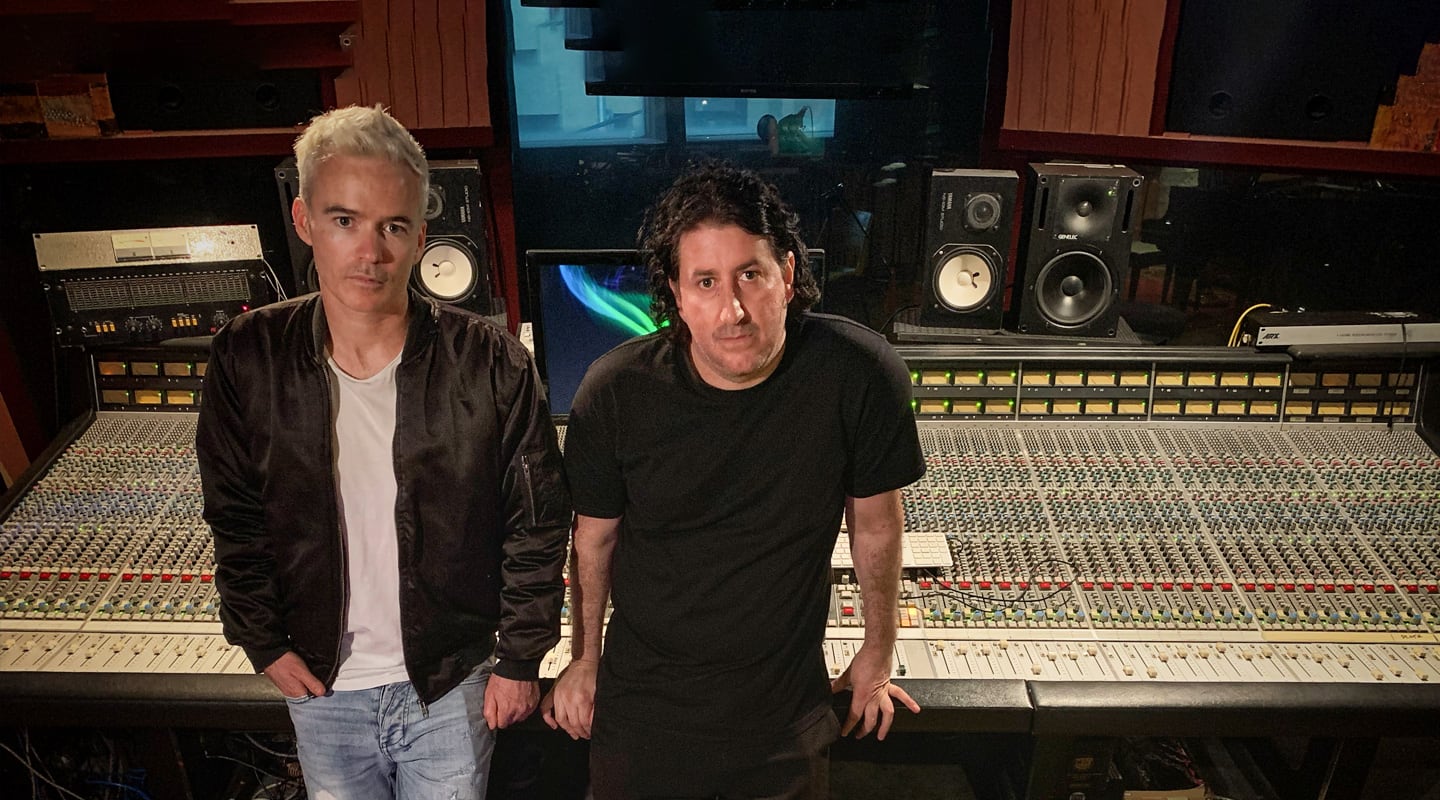
Peaking: Producing The Avalanches
The Avalanches’ Robbie Chater and Tony DiBlasi on how they produced ‘We Will Always Love You’.

Artist: The Avalanches
Album: We Will Always Love You
The idea of a 24-carat gold LP aboard an interstellar probe, taking a curated playlist of the ‘Best of Planet Earth’, is an intoxicating one.
The famous disc on the Voyager spacecraft is a touchstone artefact for Earth as a ‘music beacon’, broadcasting to the galaxy. Ever since Marconi started tinkering with his crystal set, humans have been spilling music and drama out to the cosmos.
It’s a ghostly notion. Not morbid, necessarily, but poignant. It’s something that The Avalanches use as an inspiration for their new album.
Which is curious. I rather fancy that if the Avalanches’ Robbie Chater and Tony DiBlasi were cooling their heels in a spaceship off the shoulder of Orion, they’d be tuning in… picking up fragments of decades old Earthly radio shows… recording the snippets, then turning them into bangers on an Akai S900 sampler. Robbie Chater elaborates:
“We began reflecting on what it meant to sample a record from the 1940s, for example — someone who’s long since passed away, but whose voice lives on. It’s almost like summoning spirits. Every broadcast that’s ever been made in the last hundred years is still floating out there in space. And so I began picturing planet Earth from afar and looking at it as almost being surrounded by spirits and ghosts still floating around — Billie Holiday, John Lennon… it’s a beautiful thought to me.”
VOICES LIVE ON
It feels like a far cry from the devil-may-care, break-all-the rules bravado of The Avalanches’ seminal first album, Since You Left Me. It’s an album almost universally admired for pulling off the seemingly impossible — an record almost entirely composed of sliced ’n’ diced samples that sounds like a cohesive body of compelling work, rather than a lucky-dip free-for-all.
The Avalanches redefined the meaning of the ‘difficult’ second album, which took some 16 years to complete.
This new, third, album remains entirely true to The Avalanches craft — a work of master craftsmen samplists — but it sounds grown up. Not dour, there’s still plenty of joy to be had, but perhaps without the ‘hits ’n’ giggles’ of the past.
“We began exploring different kinds of devotional, gospel music and Christian music…mass choral work for example,” explains Robbie Chater. “Then we found a track called the Hammond Song by a group called The Roches… it’s an old Robert Fripp-produced record. The three sisters in the group stack their vocals in a way that’s beautiful and this line ‘we will always love you’ really struck us — it encapsulated everything we were considering.”
The world of opp shop records provides an almost infinite smorgasbord for samplists like Tony and Robbie, so the Hammond Song was the rudder that helped direct the choices of the project.
“When we began layering those samples, the high frequency buildup of the static took on the ghostly feel of half heard voices, like the cosmic microwave background radiation of planet Earth or TV static. We even made drum sounds from that static. It helped form the sonic picture of the album.”
GLORIOUS & PRESENT
We Will Always Love You is also a love-in for some amazing guest vocal performances — from artists with a heart beat. Far from being scratchy apparitions, they’re glorious and present.
“We were sourcing vocals in a whole variety of ways,” recalls Tony DiBlasi. “We recorded some ourselves in the studio, others were sent to us as phone recordings and everything in between. We didn’t have a magical vocal chain that worked for everything, that’s for sure, every vocal was a journey of its own. For example, Reflecting Light, has a Vashti Bunyan sample from the ’70s. But she shares that song with a new vocal that Senanda Maitreya recorded for us. His performance is full and beautiful while her vocal samples are thin and crackly. But we wanted them both to work together. So it’s a journey, trialling things, removing instrumentation when needed.”
“I remember Tony talking to me about that song,” continues Robbie Chater. “He said, ‘With Senanda’s vocal you can’t keep adding your normal layers of Robbie f**king shit. This is one of the most amazing vocal performances you’re ever going to hear! You’ve got to let it be.’ And he was right. We had to leave room for it.
“We’re used to crunching vocal samples from the ’70s with something crackly from the ’50s. With those Akai hardware samplers, it all just worked somehow.”
“But filtering the parts to make room for something beautiful like Senanda’s performance was different,” concurs Tony DiBlasi. “The space around that vocal is precious. Hearing the tiny echoes and reverb in that recorded space, and preserving it… I guess that was new to us.”
VOCAL RABBIT HOLE
In other words, vocals were no longer simply another colour in The Avalanches’ palette — no more or less important to the mix than any other hook or loop. We Will Always Love You is a vocal-led and -inspired album and the performances were treated with due reverence.
Robbie Chater: “It was a really steep learning curve. I reckon I spent half my time on this record just mixing vocals. ‘Do I leave that breath in between those two lines?’ ‘How clean do I want this performance?’ I remember I got a vocal where I could hear a dog barking. I love all that stuff, but how much of it can I leave in? And de-essing, oh, my, God… if I ever have to de-ess another vocal it’ll be too soon.”
Robbie channelled his hyper-focussed perfectionist energy into seemingly-endless vocal tonal tweaking. Using an SSL EQ within Pro Tools he would share alternative mixes with Tony with barely discernible tonal touches.
Tony DiBlasi: “Robbie got extremely drawn into the detail and became extremely good at it. He would do five different takes of something that would sound almost identical but eventually there would be the one that just hits it completely on the spot, and you instantly know it’s the one.”
It’s an anecdote that highlights The Avalanches’ instinctive approach to making records. Or as Robbie Chater puts it: “It’s a feeling thing. How do you know a mix sounds great? It might sound just fine but why am I still not satisfied? With a fresh head you can often make that tiny adjustment and for the mix to feel right.”

GHOSTS OF AKAI
Released back in 2000, Since I Left You was produced on Akai S900 and S2000 samplers with (the now defunct) Opcode Studio Vision providing the sequencing, running on a beige G3 Macintosh.
When The Avalanches hit the studio, all the samples were printed into Pro Tools to be laid out on a mixing console. It was a hugely laborious task.
Tony and Robbie have gone through stages of collecting studio gear over the years but now is not one of those stages: “a turntable, speakers and a UA Apollo Twin audio interface” is all it amounts to… the Akai samplers have been retired, replaced by Pro Tools.
Robbie Chater: “It’s just some junk store records, a cup of coffee and my imagination. It’s so beautiful and pure and brings it back to the artform of sampling. That’s our craft and I’ll be happy doing that forever.”
Sounds idyllic but as guest vocal and instrumental contributions rolled in, Robbie needed to stick his mixing hat on.
Robbie: “On previous occasions everything had to move from hardware samples into Pro Tools to mix whereas this project was in Pro Tools from the beginning, which meant we were always thinking about the mix. But it was when the vocals started to come in, that’s where the real hardcore mixing began.”
Robbie’s process is a familiar one. He mixes at home with a trusty pair of Barefoot studio monitors. He’ll send work in progress mixes to Tony for an opinion. Tony will pop it on the car stereo and have a listen through a standard pair of white earbuds. “Some days if I can’t get a vocal to sound right I will unplug it from my system at home and mix through the laptop speakers for a couple of hours,” reports Robbie. “I try not to overthink things but getting the vocals to sit well is crucial.”
It’s a slight change of discipline for The Avalanches. An Avalanches mix famously roils and morphs, pushing one component after another into the limelight before taking a backwards step in deference to another element. Strings, bass, drum loops are all filtered and unfiltered allowing complex and multilayered mixes to breathe and stretch their legs. Which is why an Avalanches mix always rewards multiple listens and never fails to surprise and delight.
“There are so many things that you won’t hear but you’ll feel,” describes Tony DiBlasi. “It isn’t until that’s taken away that you think, ‘hey, something’s different’. In retrospect, I think Wildflower was overbearing in that regard. We overlaid everything with another sample and the real beauty would get lost beneath this outer layer. It’s about creating this feel, but then not overdoing it so it’s not overwhelming the point of the song.”
“Which is why we work so well as a team,” reflects Robbie Chater. “We mix together even if we’re not in the same room. It provides the right checks and balances.”
SUMMING UP AT SUNSET SOUND
Finishing the album was, by necessity, a little different to the Wildflower experience. Sing Sing’s Richmond studio has shut its doors and the big K Series SSL used on Wildflower has gone. Tony and Robbie paid a visit to the SSL G Series console in the new Sing Sing location in South Yarra. They also conducted some tests on the Neve 8088 console at Sunset Sound, LA. While they were visiting they gave Sunset Sound’s custom API/DeMedio console a test drive and it ‘won hands down’.
Robbie: “This record is a bit more modern sounding and we wanted it to work in clubs when required. The Sunset Sound Neve was a bit soft and, no doubt, amazing for rock ’n’ roll. Sing Sing’s SSL was a bit clean and the Sunset Sound API console was just like a perfect compromise — it would warm things up but maintain clarity.”
Robbie and Tony had finessed the mixes to the nth degree in Pro Tools so Sunset Sound’s API was employed as a summing mixer. With the mixing console ‘zero’ed’, Robbie and Tony hit the console at slightly different overall levels to hear how the mix responded running through the API’s circuits.
Tony: “We didn’t use any of the mixer’s EQ. Everything was set at zero and we pumped the mix from the box, everything through separate outputs, just hitting the desk at different levels and then picking our favourite. If we hit the mixer hard, it would close down the top end a bit too much, but we would find a sweet spot and print it.”
HEAR THE WORLD DIFFERENTLY
If there was once a stigma or snobbery about creating music from samples, then Robbie and Tony blows such misconceptions out of the water. If you think what these guys do is somehow ‘cheating’ you must have rocks in your head. Robbie Chater describes their process thus: “It’s a combination of extremely hard work, and following our hearts.” While Tony DiBlasi sums things up this way: “No rules. Just constant learning, which means we don’t get stuck in one way of doing things.”
And that’s been The Avalanches’ credo from the beginning: a bunch of punk rock kids without any musical training finding a way of expressing themselves.
So will the Akai samplers make a return?
“They’re still in the cupboard and I’m sure we’ll pull them out again in the future.”


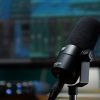
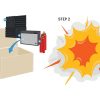
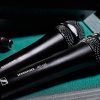




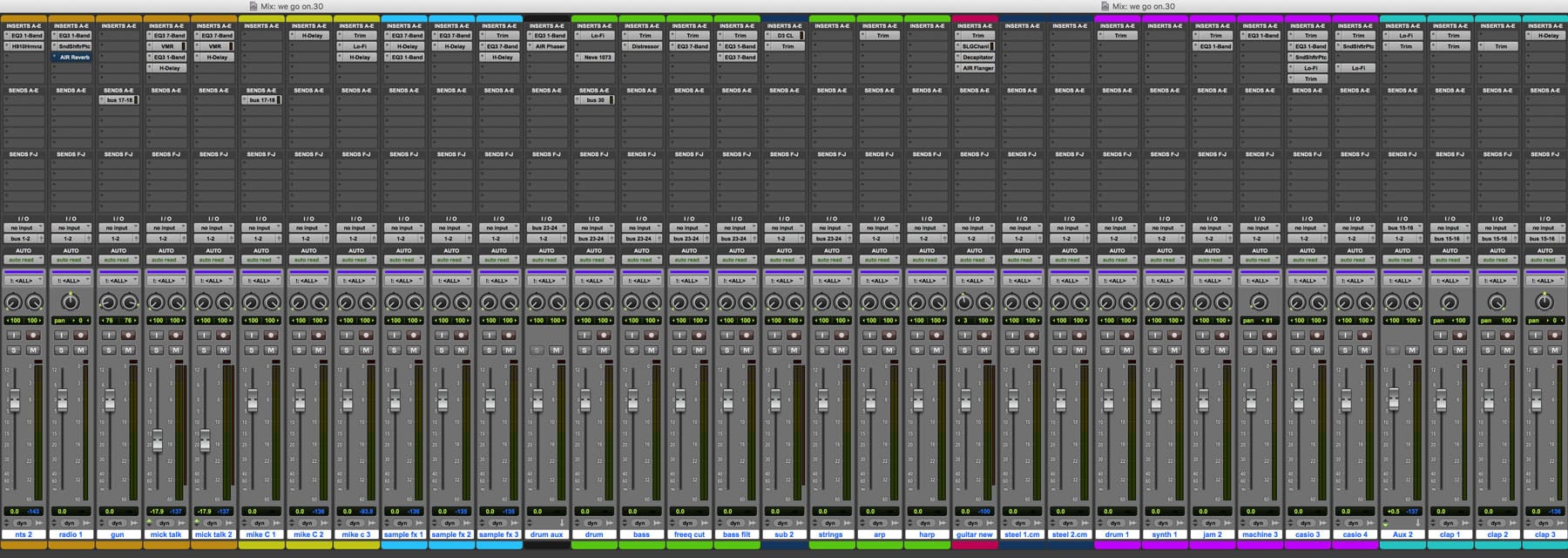









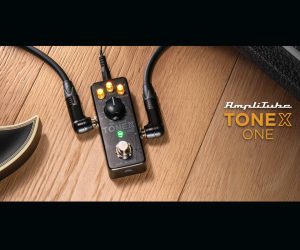





RESPONSES